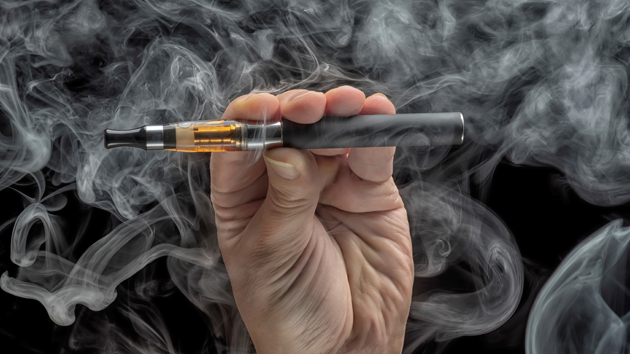
<a href="http://www.istockphoto.com/photo/vaping-and-driving-gm531976910-94049753?st=_p_ecigarettes%20teenagers">sestovic</a>/iStock
E-cigarettes, long touted as a tool to discourage smoking, are actually doing the opposite, according to a landmark study published Monday in Pediatrics. In this first-of-its kind national analysis, researchers found that the devices attract kids who otherwise would not have been likely to pick up smoking.
“E-cigarettes are encouraging—not discouraging—youth to smoke and to consume nicotine, and are expanding the tobacco market,” said Stanton Glantz, a co-author and director of the University of California-San Francisco Center for Tobacco Control Research.
Last year, the Food and Drug Administration announced sweeping regulation of e-cigarettes, which included restricting purchase by those under 18.
The researchers analyzed data from the Center for Disease Control’s National Youth Tobacco Survey between 2004 and 2014, completed by more than 140,000 middle and high schoolers. They found that while cigarette smoking rates declined, the introduction of e-cigarettes had no effect on the decline. Meanwhile, the total use of tobacco products (cigarettes combined with e-cigarettes) has increased. That’s concerning, the researchers say, since several longitudinal studies have found that kids who use e-cigarettes are three times more likely to smoke cigarettes a year later.

Past research has found that certain characteristics measured in the CDC survey—like living with a smoker, wearing clothing with a tobacco company logo, or saying they would accept cigarettes from a friend—are predictors of a teen’s likelihood of picking up smoking.
But the Pediatrics study found that e-cigarette smokers displayed fewer of these characteristics, leading the researchers to conclude that e-cigarettes are attracting a new population rather than just being used by existing smokers.
Gregory Conley, the president of the American Vaping Association, says that the study’s findings “strain credulity,” as youth smoking is rapidly declining, teens typically use vapor products occasionally rather than habitually, and “only a fraction of recent users report using the products with nicotine.”
Lauren Dutra, a study co-author and researcher at RTI International, counters that smoking rates were already falling before the advent of e-cigarettes, and that nicotine levels in e-cigarettes are not yet regulated by the FDA.
“I don’t want to say if e-cigarettes didn’t exist, these kids never would have been exposed to nicotine,” says Dutra. But “perhaps these kids wouldn’t have picked up a cigarette or wouldn’t have used nicotine at all had it not been for the existence of e-cigarettes on the market.”











